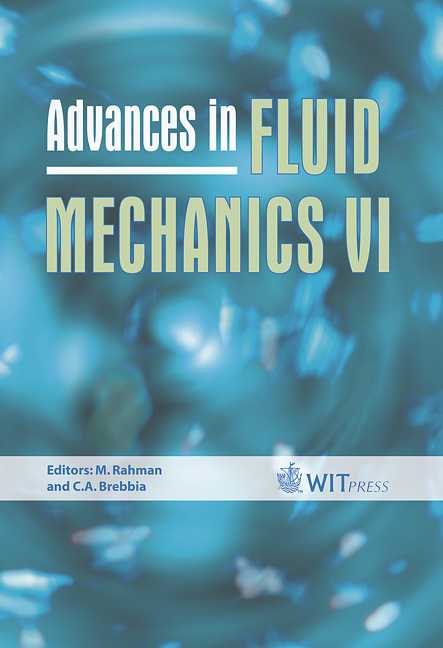The SGS Kinetic Energy And The Viscous Dissipation Equations As Closure Relations In LES
Price
Free (open access)
Transaction
Volume
52
Pages
10
Published
2006
Size
1,216 kb
Paper DOI
10.2495/AFM060541
Copyright
WIT Press
Author(s)
F. Gallerano, L. Melilla & E. Pasero
Abstract
In this paper the main drawbacks of the large eddy simulation models, present in literature, are analysed and a new LES model is proposed. The closure relation for the generalised SGS turbulent stress tensor: a) complies with the principle of turbulent frame indifference; b) takes into account both the anisotropy of the turbulence velocity scales and turbulence length scales; c) removes any balance assumption between the production and dissipation of SGS turbulent kinetic energy. In the proposed model: a) the closure coefficient which appears in the closure relation for the generalised SGS turbulent stress tensor is theoretically and uniquely determined without adopting Germano’s dynamic procedure; b) the generalised SGS turbulent stress tensor is related exclusively to the generalised SGS turbulent kinetic energy (which is calculated by means of its balance equation) and the modified Leonard tensor. In this paper the main drawbacks associated with the calculation of the viscous dissipation by means of an algebraic model are shown. The calculation of the viscous dissipation is carried out by integrating its exact balance equation. The velocity field obtained from the numerical simulation is analysed by using vortex identification methods D, Q and λ2. The comparative analysis of each identification method is also carried out, highlighting how methods D and Q improperly associate the presence of a vortex to zones of high vorticity while the λ2 method identifies a vortex only when it coincides with a minimum of pressure. Keywords: LES, sub grid kinetic energy viscous dissipation, balance equation anisotropy, scale similarity, vortex identification.
Keywords
LES, sub grid kinetic energy viscous dissipation, balance equation anisotropy, scale similarity, vortex identification.





